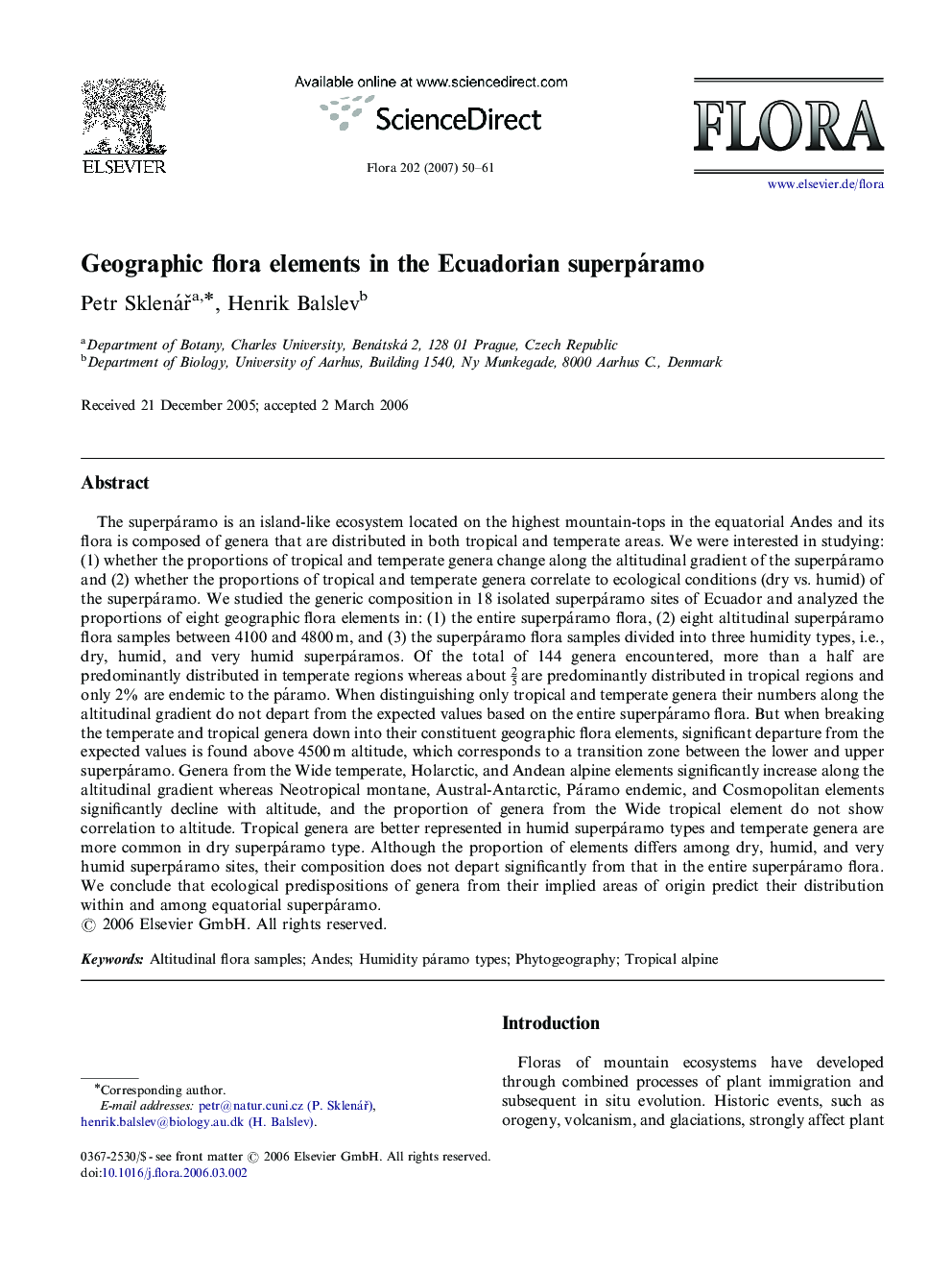| Article ID | Journal | Published Year | Pages | File Type |
|---|---|---|---|---|
| 2180306 | Flora - Morphology, Distribution, Functional Ecology of Plants | 2007 | 12 Pages |
The superpáramo is an island-like ecosystem located on the highest mountain-tops in the equatorial Andes and its flora is composed of genera that are distributed in both tropical and temperate areas. We were interested in studying: (1) whether the proportions of tropical and temperate genera change along the altitudinal gradient of the superpáramo and (2) whether the proportions of tropical and temperate genera correlate to ecological conditions (dry vs. humid) of the superpáramo. We studied the generic composition in 18 isolated superpáramo sites of Ecuador and analyzed the proportions of eight geographic flora elements in: (1) the entire superpáramo flora, (2) eight altitudinal superpáramo flora samples between 4100 and 4800 m, and (3) the superpáramo flora samples divided into three humidity types, i.e., dry, humid, and very humid superpáramos. Of the total of 144 genera encountered, more than a half are predominantly distributed in temperate regions whereas about 25 are predominantly distributed in tropical regions and only 2% are endemic to the páramo. When distinguishing only tropical and temperate genera their numbers along the altitudinal gradient do not depart from the expected values based on the entire superpáramo flora. But when breaking the temperate and tropical genera down into their constituent geographic flora elements, significant departure from the expected values is found above 4500 m altitude, which corresponds to a transition zone between the lower and upper superpáramo. Genera from the Wide temperate, Holarctic, and Andean alpine elements significantly increase along the altitudinal gradient whereas Neotropical montane, Austral-Antarctic, Páramo endemic, and Cosmopolitan elements significantly decline with altitude, and the proportion of genera from the Wide tropical element do not show correlation to altitude. Tropical genera are better represented in humid superpáramo types and temperate genera are more common in dry superpáramo type. Although the proportion of elements differs among dry, humid, and very humid superpáramo sites, their composition does not depart significantly from that in the entire superpáramo flora. We conclude that ecological predispositions of genera from their implied areas of origin predict their distribution within and among equatorial superpáramo.
